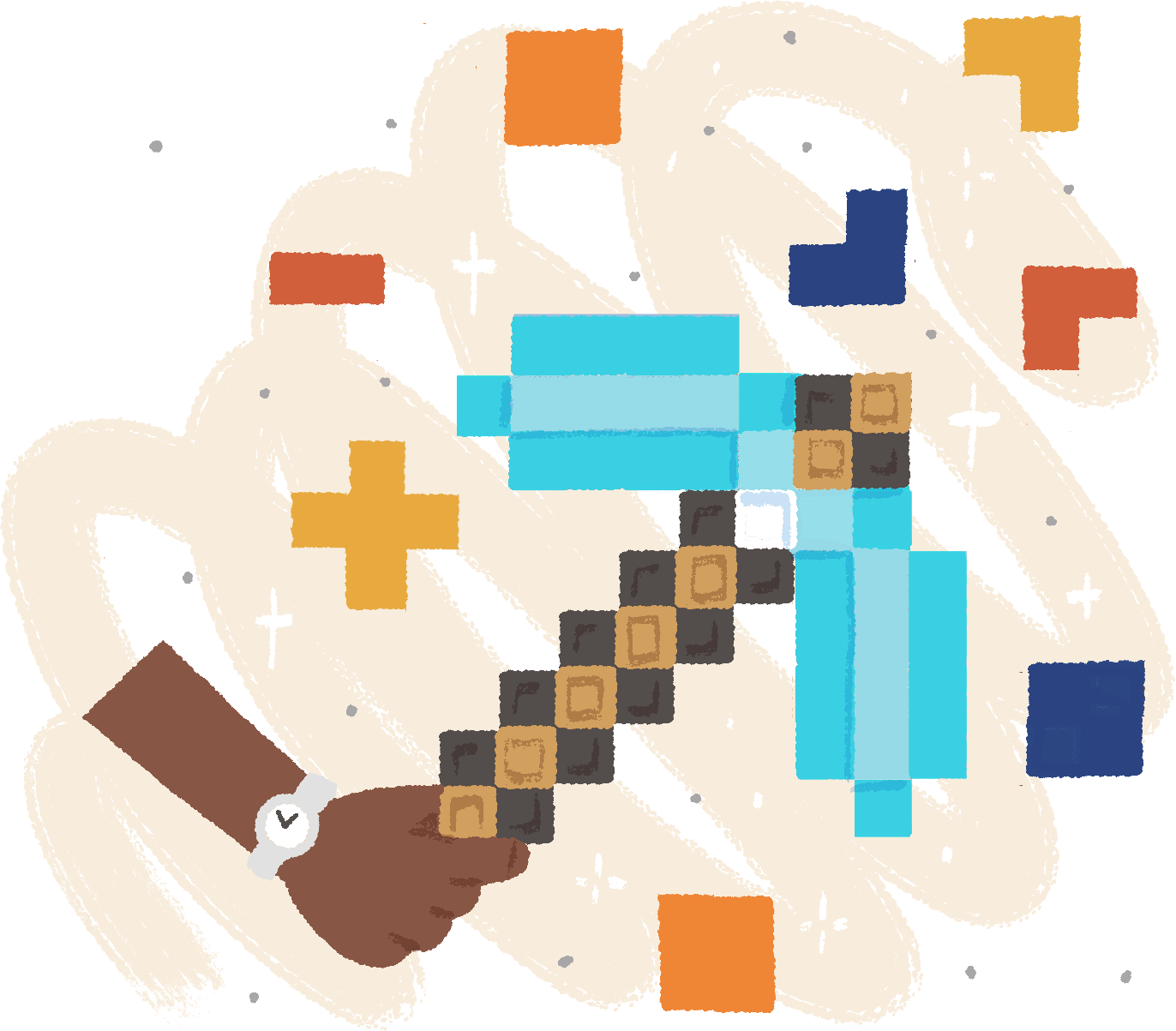The hidden possibilities of games in education
by Ben Kuchera
Illustration by Sean O’Brien
When academics mix video games and education, the question is often about whether students are learning to play or playing to learn. Researchers at Concordia’s Milieux Institute think there may be a third way to use games to teach: through the use of allegory and a custom-designed version of Minecraft.
Sean O’Brian
The team created a modded version of the game back in 2021 for a class on modernity, and asked students to play in Survival mode (instead of Creative), forcing them to think about the safety of their characters and building designs as they played their way through different class projects.
The goal was for students to test the ideas and concepts from the course’s reading materials by using them in this particular Minecraft and to see if the game helped them to understand what was taught enough to put those lessons into practice. The game’s world is something approaching a “realistic” setting with internally consistent rules and limitations, but Minecraft isn’t true to life. The differences between reality and the game’s world aren’t a limitation, though. Rather, they open up new ways for students to digest the material.
“That is, allegory is the process of critical thinking itself, in which our initial (naïve, historical, representational) assumptions about the literal meanings of some object or phenomena often prove to be too convenient,” the researchers wrote, “and we find that we have to put them into tension with some more reflexive and provisional ideas (Jameson 2002, 113), because no single thought or theory encompasses any of them (Jameson 1991, 168).”
One group project asked students to recreate Moshe Safdie’s Habitat 67, an iconic Brutalist structure. But in the take on Minecraft the students were playing, different materials would have to be processed to assemble the building blocks necessary for the structure. Since everyone was playing in Survival mode, they also had to think of how to keep their characters — and progress — safe from the game’s monsters.
Instead of literally recreating a version of the world in which Habitat 67 was physically built, this Minecraft design established an allegorical rendering of reality. In this somewhat surreal space, students could extract insight by studying the variations between realities.
This is how one student described the work:
“At the core of Habitat’s modern allure is the way in which it was constructed, with modular elements assembled in a factory, then stacked one on top of the other with the help of a crane. This standardization and quick assembly were cornerstones of the building’s modernism, which is completely undermined by our Minecraft homage. Forty blocks in the air, teetering on the edge of some hastily erected scaffolding, counting each L shape’s outline out block by block, I wished that I had the ability to pre-assemble our units on the ground, and pop them into place. My teammates, blocks in hand, filled in the units, again, block by block, and then it was once again time for me to count out the outline for the next floor. This act, of placing each block by hand, felt like traditional craftsmanship, and hardly the modernist exercise this building is meant to embody.”
Sean O’Brian
By viewing the creation of the structure through the lens of the game, the student was able to gain insight about the build in real life — how it was made in the game, and how that compared to the framework of modernity discussed. By recontextualizing the construction without removing the game’s limitations in Survival mode, the student seemed to achieve a much richer understanding of Brutalism, modernity, and architecture.
The researchers developed a fascinating kind of play space by linking the game’s rules with curated and purpose-based mods, the course’s lesson plan, in-game play, and conversation that is shown both on Discord and within the game’s servers. The students were able to test their own ideas while also discovering certain aspects of how those ideas would work in the practical rules of Minecraft. Throughout this process, they were simultaneously gaining insight about how those terms differ from our actual reality. This use of allegory in teaching complex ideas through well-controlled versions of games like Minecraft opens up an exciting way to incorporate games in education.
“...we contend that most educators do not use games to their greatest potential in classrooms, because they assume that games are about moments that are more fun than the actual work,” the researchers explained. “That dichotomy kills the potential of using games for learning. What we saw in this class is a flat ontology in action: academic research, game playing, cultural theory, thinking, and shit-posting all exist on the same plane.”
Not only does this new framework of teaching provide an updated way to think about games in academics, but it shows that games don’t have to recreate the real world to be of educational use within it. By providing a controlled series of rules that both resemble and differ from everyday reality, games can provide an allegorical representation of life as we know it — one that may be just as powerful as a more literal representation of our world.



